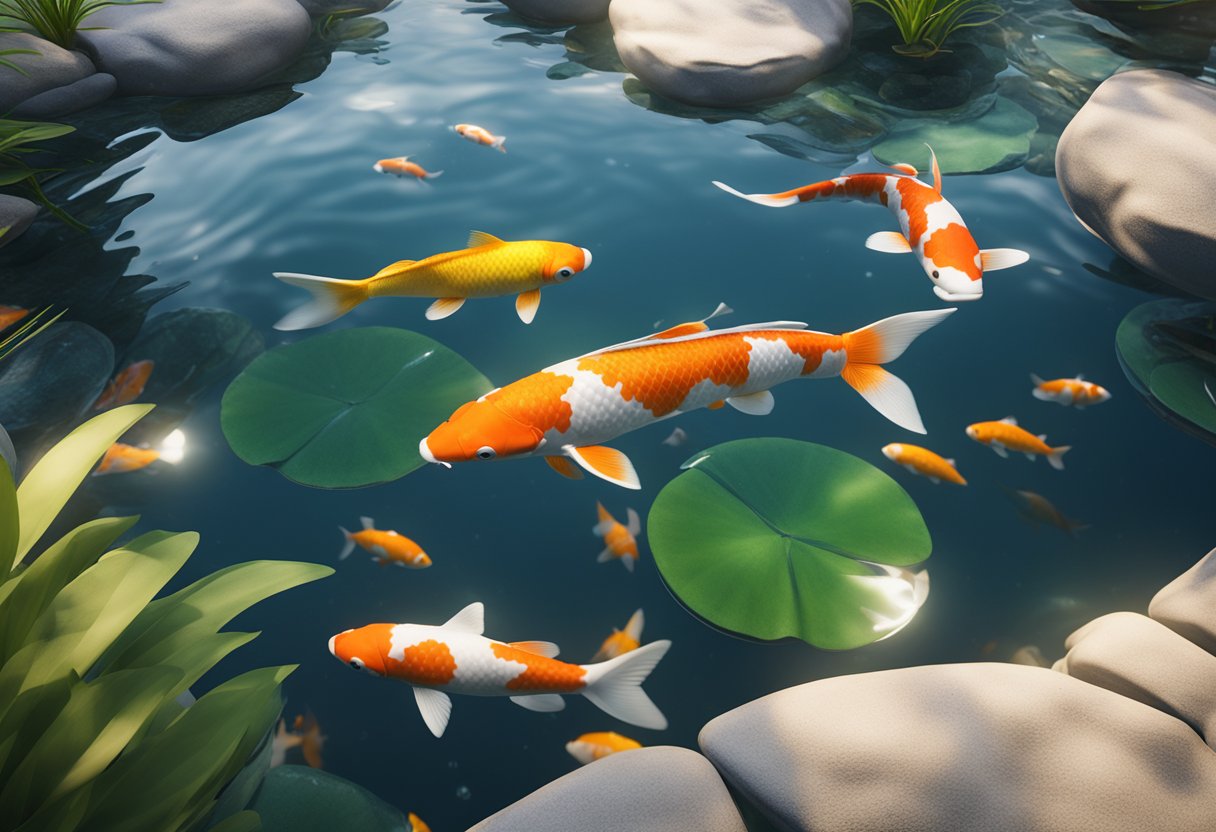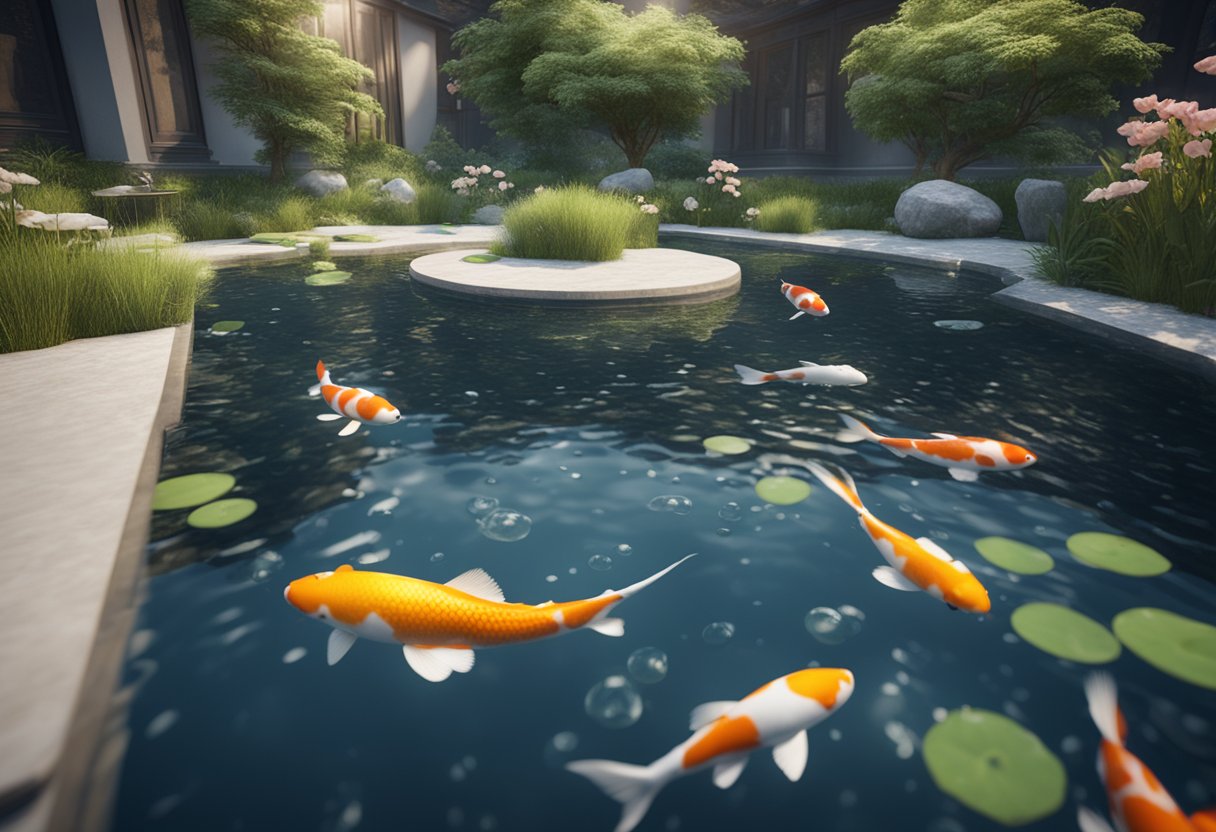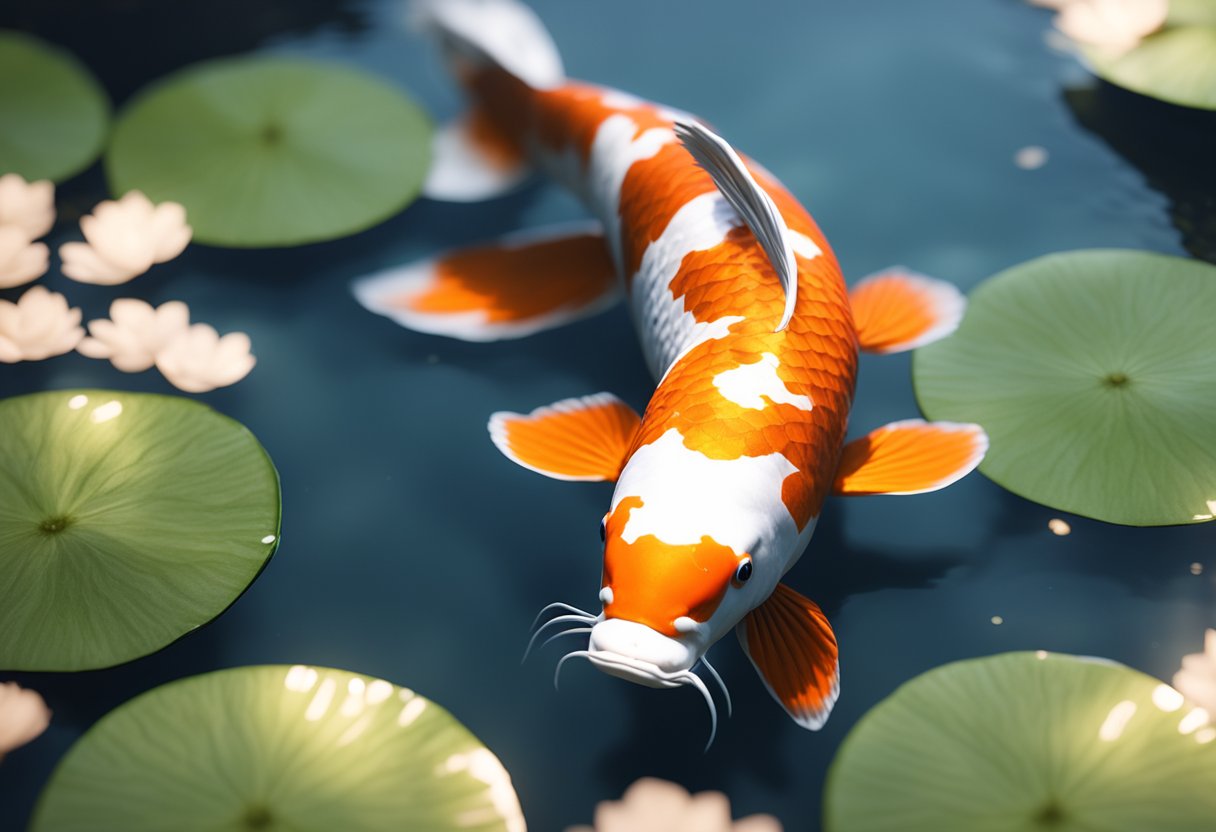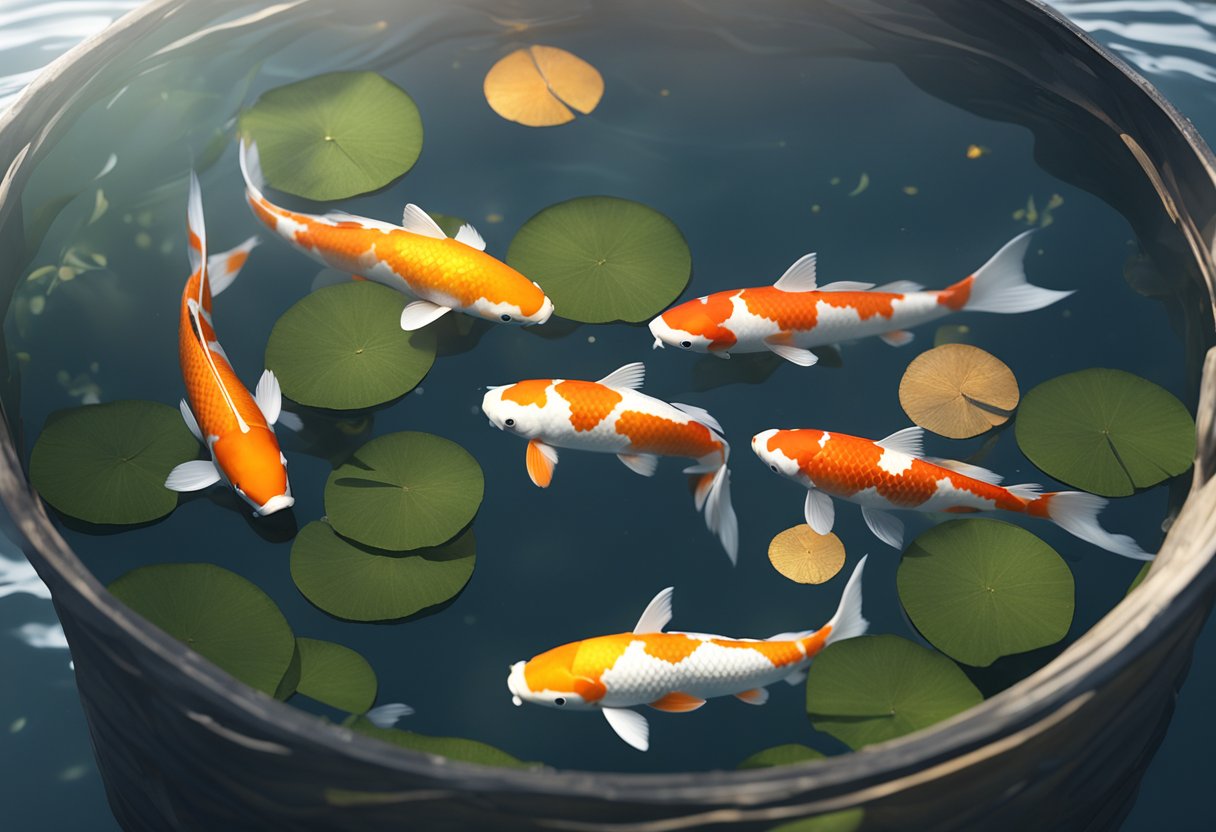Koi Pond Care: Water Quality Maintenance Tips

| Issue | Causes | Symptoms |
|---|---|---|
| Low pH | Excessive organic waste, chemical imbalances, decaying plant matter | Stress, increased susceptibility to disease, lethargy |
| High pH | Excessive algal growth, calcification of water source, inadequate aeration | Irritated gills, slowed growth, decreased appetite |
| Low Oxygen Levels | Overstocking, high water temperature, inadequate aeration | Gasping at the water surface, lethargy, increased risk of diseases |
| High Oxygen Levels | Excessive aeration, turbulent water movement | Restlessness, fish darting, decreased appetite |
By maintaining the proper balance of pH and oxygen levels, koi pond owners can promote a healthy and thriving environment for their beloved fish. Regular monitoring, appropriate adjustments, and implementing effective water management practices will contribute to the long-term success and enjoyment of keeping koi.
Temperature Control for Koi Fish
Maintaining the right water temperature is vital for the health and well-being of koi fish. Fluctuations in temperature can cause stress and impact their immune system. Here are some suggestions to keep the water temperature within the suitable range:
- Insulation: During colder months, consider using insulation materials to cover the pond and retain heat. This will help prevent extreme temperature drops that can harm the koi.
- Shading: To prevent the water from overheating in hot weather, provide ample shade using aquatic plants, shade sails, or a koi pond cover. This will help maintain a cooler temperature and reduce the risk of heat stress.
- Heating devices: In regions with severe winters, investing in a pond heater or deicer can help regulate the water temperature during freezing conditions. These devices prevent the water from completely freezing over and provide a constant source of warmth for the koi.
- Avoid rapid changes: Sudden temperature fluctuations can be harmful to the koi fish. Avoid introducing them to water with significantly different temperatures. Gradually acclimate them to new water conditions by floating their bag or container in the pond for several hours.
By implementing these temperature control strategies, you can help create a stable and comfortable environment for your koi fish, ensuring their optimal health and well-being.
| Temperature Range (°F) | Ideal for Koi Fish | Effect on Koi Fish |
|---|---|---|
| 32-65 | Optimal temperature range | Koi fish thrive and show vibrant colors |
| 65-75 | Warmer than optimal | Koi fish may become less active |
| 75-85 | Too warm | Increase risk of stress and disease |
| Above 85 | Critical danger | Possibility of fatalities |
Dealing with Common Water Quality Issues
Ensuring optimal water quality in your koi pond is essential for the health and well-being of your beloved fish. However, even with proper maintenance, there can be common water quality issues that koi pond owners may encounter. These issues, if left unaddressed, can jeopardize the overall health and vitality of your koi. In this section, we will explore some of the most common water quality issues and provide troubleshooting tips and guidance on how to effectively resolve them.
1. Ammonia Spikes:
Ammonia buildup in a koi pond is a common issue that can be detrimental to the fish. High levels of ammonia can cause stress, respiratory problems, and even death. To address ammonia spikes, perform regular water tests to monitor ammonia levels. If elevated, take immediate action by performing partial water changes to dilute the ammonia concentration. Additionally, ensure that your filtration system is functioning properly, as a well-maintained filter is crucial for removing ammonia from the water.
2. Nitrite Buildup:
Nitrite is another harmful substance that can accumulate in koi ponds, especially during the early stages of the nitrogen cycle. Similar to ammonia, high nitrite levels can lead to fish stress and health issues. To combat nitrite buildup, consider adding beneficial bacteria to your pond, such as those available in specially formulated water treatments. These bacteria promote the conversion of harmful nitrites into less toxic nitrates. Additionally, regular water testing and partial water changes can help keep nitrite levels in check.
3. Bacterial Infections:
Bacterial infections can occur when the water quality in a koi pond is suboptimal. These infections may manifest as sores, ulcers, or fin rot in the fish. To prevent and treat bacterial infections, maintaining proper water quality is crucial. Regularly check and maintain water parameters, including pH, ammonia, nitrite, and temperature, within the optimal ranges for koi fish. In case of an infection, isolate the affected fish and administer appropriate treatments as recommended by a veterinarian specializing in aquatic animals.
4. Algae Blooms:
Algae blooms are a common issue in koi ponds, especially during hot weather or when there is excessive sunlight. While some algae growth is normal and beneficial, excessive blooms can disrupt the balance of the ecosystem and lead to poor water quality. To control algae, consider implementing a combination of strategies like manual removal, reducing nutrient inputs (such as overfeeding), and using appropriate algae treatments or natural algae inhibitors. It is important to strike a balance to maintain a healthy pond environment for your koi.
5. pH Imbalances:
pH imbalances can affect the overall well-being of your koi fish and the overall water quality in your pond. Koi thrive in water with a pH level in the range of 7.0 to 8.0. To address pH imbalances, regularly test your pond water and make adjustments as needed. pH stabilizers or buffers can be utilized to bring the pH within the optimal range. When using any pH-altering products, it is crucial to carefully follow the instructions, as improper use can lead to further imbalances.
By addressing these common water quality issues promptly and effectively, you can maintain a clean and healthy environment for your koi fish, promoting their overall health and longevity.
Conclusion
In conclusion, maintaining water quality in koi ponds is essential for the health and well-being of the koi fish. Throughout this article, we have discussed several key tips and practices for water quality maintenance. By following these guidelines, koi pond owners can create a healthy environment that allows their fish to thrive.
Consistent water quality monitoring is crucial to ensure that the necessary parameters are maintained at optimal levels. Regular testing and monitoring will help identify any issues early on and enable prompt corrective actions. Additionally, having an efficient filtration system in place is vital for removing impurities and maintaining water clarity.
Proactive maintenance, such as routine water changes and algae control, plays a crucial role in keeping the water clean and clear. Balancing pH and oxygen levels, as well as controlling the temperature, also contributes to the overall well-being of the koi fish.
By prioritizing water quality maintenance and implementing the tips and practices discussed in this article, koi pond owners can create a thriving and vibrant environment for their beloved fish. Remember, a healthy pond leads to happy and thriving koi.




